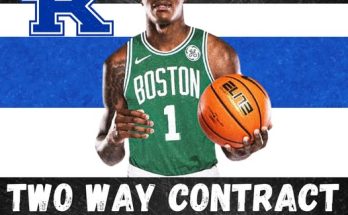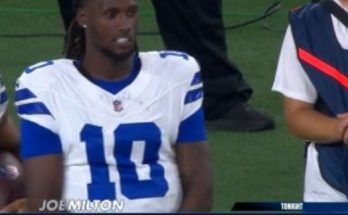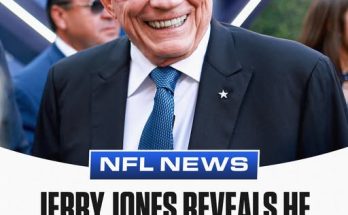When Auburn Football first signed its partnership deal with Under Armour in 2006, few could have predicted the impact it would have—not just on the team’s aesthetics, but on its culture, performance, and national identity. Now, nearly two decades later, that chapter is officially coming to a close. Auburn University has announced it will not renew its contract with the Baltimore-based sportswear brand, bringing an end to one of the most recognizable apparel partnerships in college football history. It’s more than a change of clothing—it’s the end of an era.
Under Armour’s relationship with Auburn began at a time when both entities were ascending. The brand was still carving its niche in a market dominated by Nike and Adidas, and Auburn was building toward national prominence. The 2006 season marked the Tigers’ first appearance wearing Under Armour gear, and while it wasn’t the flashiest rollout, it laid the foundation for years of excellence to come. From that point on, Auburn Football and Under Armour became synonymous with innovation, grit, and an unmistakable sense of Southern pride.
The most iconic moment of this era came in 2010, when Auburn, led by Heisman Trophy-winning quarterback Cam Newton and head coach Gene Chizik, captured the BCS National Championship. Decked out in Under Armour from helmet to cleats, the Tigers stunned Oregon in a 22-19 thriller, etching themselves into college football history. It wasn’t just a win—it was a cultural milestone. Auburn’s orange and blue never looked sharper, and Under Armour’s gear stood up to the highest stage with durability and style. That championship season elevated both Auburn and Under Armour into an elite stratosphere, and for fans, the jersey Cam Newton wore as he crossed into the end zone remains a sacred relic of the modern era.
The partnership also birthed an aesthetic identity. The sleek designs, the bold alternate uniforms, the evolution of Auburn’s iconic stripes—all of it was filtered through the creative lens of Under Armour. Each season brought slight innovations, sometimes met with skepticism, other times with overwhelming fanfare. From white-on-white road combos to blue-out home games under the lights of Jordan-Hare Stadium, Under Armour’s design team worked to balance tradition with modern appeal. And even when results on the field didn’t always meet expectations, the Tigers rarely lost the fashion battle.
Beyond uniforms, Under Armour’s commitment to Auburn extended into facilities, recruiting, and branding. The brand invested heavily in Auburn Athletics, assisting with training technology, marketing campaigns, and athlete performance wear that aligned with the university’s ambitions. In return, Auburn gave Under Armour legitimacy in the Southeastern Conference—a league dominated by Nike powerhouses like Alabama, Georgia, and LSU. Auburn stood apart, not just in results, but in image. It was proudly different, and the partnership became a badge of distinction.
There were memorable individual moments, too. Nick Fairley terrorizing opposing quarterbacks in 2010. Kerryon Johnson hurdling defenders en route to an SEC Championship in 2017. Tank Bigsby’s powerful runs that made fans believe in the program’s future during rebuilding years. And of course, the unforgettable “Kick Six” in 2013—a play that didn’t just redefine a rivalry but became one of the most electrifying plays in college football history. All of it happened under the Under Armour banner, with the bold “UA” logo stitched into the history books.
Coaches came and went—Tommy Tuberville, Gene Chizik, Gus Malzahn, and now Hugh Freeze—but the Under Armour connection remained a constant. The brand’s presence became a part of Auburn’s recruiting pitch, part of its visual identity, and an expected sight on the sidelines and in the student section. Fans lined up for the latest Under Armour drops, from limited-edition sideline gear to player-worn hoodies. High school recruits posted photos donning Under Armour Tiger gear on their official visits. It became as much a part of the Auburn story as Toomer’s Corner or the Tiger Walk.
But as the college sports landscape shifted—with NIL deals, conference realignments, and rising apparel competition—so too did Auburn’s strategic focus. Nike and Adidas continued to dominate market share, and other brands made aggressive pushes to sign premier programs. Under Armour itself faced challenges in recent years, scaling back its collegiate sponsorships and rethinking its investment strategy. For Auburn, the decision to move on wasn’t necessarily personal—it was business. A forward-looking move aimed at increasing brand visibility, recruiting leverage, and long-term competitiveness.
Still, the end of this partnership brings a wave of nostalgia and bittersweet emotion. For an entire generation of Auburn fans, Under Armour has been the brand. It’s what they wore during tailgates, what they repped in the stands, and what they saw on the field during some of the school’s greatest athletic triumphs. The breakup isn’t just about jerseys—it’s about memories, identity, and a feeling of shared evolution.
Looking forward, speculation abounds about what comes next. Will Auburn jump ship to Nike, aligning with its in-state rival Alabama in terms of branding, or will it opt for Adidas, which has made bold moves to secure a stronger foothold in SEC territory? Whatever the answer, the transition is certain to mark a noticeable shift not only in the visual presentation of the Tigers, but in the way the program positions itself in the broader college football arms race.
Regardless of the future brand, Auburn’s Under Armour era will remain a golden chapter in its rich football history. The combination produced not only a national championship but a lasting cultural legacy—a unique bond between a school and a brand that helped each other grow. From the thunderous roar of Jordan-Hare Stadium to the silent grind of early morning workouts, Under Armour was there every step of the way. Players laced up in it, coaches led in it, fans bled in it.
The Tigers may soon wear a different logo across their chests, but the imprint of Under Armour on Auburn Football is permanent. It’s in the photographs hanging in homes and sports bars. It’s in the highlight reels and framed jerseys. It’s in the roar of the crowd during the Iron Bowl and the triumphant confetti showers of Glendale, Arizona. It’s in the moments that defined a generation.
As the Auburn family closes the book on nearly two decades with Under Armour, it does so with gratitude, pride, and a heart full of memories. And as the next era dawns, one thing is clear: though the brand may change, the Auburn spirit never will. War Eagle—forever.



